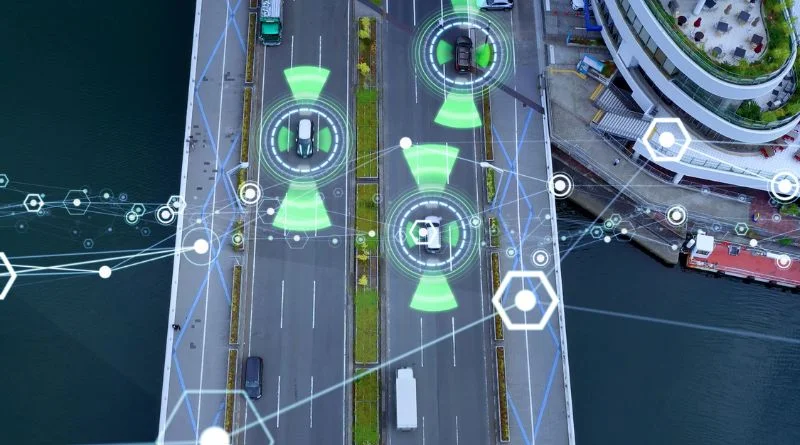How ADAS is Driving the Evolution of Autonomous Vehicles
The future of autonomous vehicles is upon us, and it’s not just about self-driving cars. Thanks to Advanced Driver Assistance Systems (ADAS), vehicles are evolving at a rapid pace, making our roads safer and more efficient. In this article, we will explore how ADAS is driving the evolution of autonomous vehicles and the impact it will have on our daily lives.
By incorporating cutting-edge technologies such as sensors, cameras, and artificial intelligence, ADAS is revolutionizing the driving experience. It provides features like adaptive cruise control, lane keep assist, and automatic emergency braking, making our journeys smoother and hassle-free. With the ability to detect and respond to potential hazards in real-time, ADAS is making driving safer than ever before.
But ADAS is not just about safety; it’s also about convenience. Imagine a future where your car can park itself or change lanes effortlessly, allowing you to sit back and relax during your commute. With ADAS, this vision is becoming a reality.
As autonomous vehicles become more advanced and widely adopted, the benefits of ADAS will only increase. So buckle up and get ready for the ride, because the future is now, and ADAS is driving us towards a new era of transportation.
Benefits of ADAS in terms of safety and convenience
ADAS plays a crucial role in the development and evolution of autonomous vehicles. It serves as the foundation upon which self-driving cars are built. ADAS technology enables vehicles to sense and perceive their surroundings, analyze data in real-time, and make informed decisions based on the information received.
One of the key aspects of ADAS is its ability to enhance safety on the roads. With features like adaptive cruise control, vehicles can automatically adjust their speed to maintain a safe distance from the vehicle ahead. Lane keep assist helps drivers stay in their lanes by providing gentle steering inputs when necessary. Automatic emergency braking can detect potential collisions and apply the brakes to mitigate or prevent accidents.
In addition to safety, ADAS also offers a range of convenience features. Parking assist, for example, allows vehicles to park themselves with minimal driver input. This eliminates the stress and frustration often associated with finding a parking space. ADAS can also assist with lane changing, making it easier and safer to navigate through traffic. These convenience features not only make driving more enjoyable but also save time and effort for the driver.
Current state of ADAS technology

ADAS technology has come a long way in recent years, with significant advancements in sensor technology, artificial intelligence, and connectivity. Sensors such as radar, lidar, and AI-enabled dash cameras play a crucial role in detecting and interpreting the environment around the vehicle. These sensors provide valuable data that ADAS systems can use to make informed decisions.
Artificial intelligence algorithms are at the heart of ADAS technology, enabling vehicles to analyze and interpret complex data in real-time. Machine learning algorithms allow the system to continuously improve and adapt to changing road conditions. This helps to enhance the accuracy and reliability of ADAS features, making them more effective in their intended purpose.
Connectivity is another critical aspect of ADAS technology. With the advent of 5G networks and vehicle-to-vehicle (V2V) communication, vehicles can share data with each other, providing a more comprehensive and accurate picture of the road environment. This connectivity also enables over-the-air updates, allowing ADAS systems to receive software upgrades and improvements without the need for physical intervention.
ADAS features and capabilities
ADAS encompasses a wide range of features and capabilities that enhance both safety and convenience. Let’s take a closer look at some of the most common ADAS features:
- Adaptive Cruise Control (ACC): ACC uses sensors to maintain a safe distance from the vehicle ahead. It automatically adjusts the vehicle’s speed to match the flow of traffic, providing a more comfortable and stress-free driving experience.
- Lane Keep Assist (LKA): LKA uses cameras to monitor the vehicle’s position within the lane. If the vehicle starts to drift out of its lane, the system provides gentle steering inputs to keep it centered.
- Automatic Emergency Braking (AEB): AEB uses sensors to detect potential collisions and applies the brakes automatically if the driver fails to respond in time. This feature can help prevent accidents or reduce their severity.
- Blind Spot Detection (BSD): BSD uses sensors to monitor the vehicle’s blind spots. It provides visual or audible alerts if there is a vehicle in the blind spot, helping to prevent lane change accidents.
- Parking Assist: Parking assist utilizes sensors and cameras to help drivers park their vehicles with ease. It can provide visual and auditory guidance, making parallel parking a breeze.
These are just a few examples of the many ADAS features available in modern vehicles. As technology continues to advance, we can expect to see even more innovative features that enhance safety and convenience on the road.
Challenges in the development and implementation of ADAS
While ADAS technology has made significant strides, there are still challenges that need to be overcome for widespread adoption. One of the biggest challenges is the cost of implementation. Advanced sensors, cameras, and computing systems can be expensive, making it difficult for some automakers to incorporate ADAS into their vehicles at an affordable price point.
Another challenge is the reliability and accuracy of ADAS systems. While they have improved significantly, there is still room for improvement. False positives or false negatives can lead to unnecessary interventions or missed hazards, potentially compromising safety.
Furthermore, there is a need for standardized testing and evaluation of ADAS systems. Currently, there is no universal framework for evaluating the performance and effectiveness of these systems. Establishing standardized testing protocols would ensure that ADAS features meet the necessary safety and performance standards.
The impact of ADAS on the automotive industry

The rise of ADAS technology is reshaping the automotive industry in many ways. Firstly, it is driving innovation and competition among automakers. As consumers become more aware of the benefits of ADAS, they are demanding these features in their vehicles. Automakers are responding by incorporating ADAS into their vehicle lineup and constantly improving and expanding the capabilities of these systems.
Secondly, ADAS is changing the way vehicles are designed. With the need for sensors, cameras, and computing systems, vehicles are becoming more technologically advanced. This shift towards more connected and intelligent vehicles opens up new opportunities for collaboration between automakers and technology companies.
The aftermarket sector is also experiencing significant growth due to ADAS. As more vehicles are equipped with ADAS features, there is a demand for retrofitting older vehicles with these technologies. This presents opportunities for aftermarket companies to provide ADAS solutions to a wide range of vehicles.
Government regulations and policies regarding ADAS and autonomous vehicles
With the rapid advancement of ADAS technology, governments around the world are taking steps to regulate and ensure the safe development and deployment of autonomous vehicles. These regulations cover a wide range of issues, including safety standards, data privacy, liability, and cybersecurity.
Government agencies are working closely with automakers and technology companies to establish guidelines and standards for ADAS and autonomous vehicles. These regulations aim to ensure that these technologies are safe, reliable, and beneficial to society as a whole.
In addition to regulations, government policies also play a crucial role in promoting the adoption of ADAS and autonomous vehicles. Incentives such as tax credits and subsidies for electric and autonomous vehicles encourage consumers to embrace these technologies. Governments are also investing in infrastructure upgrades to support the deployment of autonomous vehicles, such as the installation of charging stations and the development of smart transportation systems.
Future advancements and trends in ADAS technology
As technology continues to advance, we can expect to see even more exciting developments in ADAS. Here are some future advancements and trends to look out for:
- Enhanced Sensor Technology: Improvements in sensor technology will provide more accurate and detailed data, enabling ADAS systems to better perceive and understand the surrounding environment.
- Artificial Intelligence and Machine Learning: AI and machine learning algorithms will continue to evolve, allowing ADAS systems to learn and adapt in real-time. This will result in more intelligent and proactive systems that can anticipate and respond to potential hazards.
- V2V and V2X Communication: Vehicle-to-vehicle (V2V) and vehicle-to-everything (V2X) communication will become more prevalent, enabling vehicles to share information with each other and with the surrounding infrastructure. This will enhance the overall safety and efficiency of the transportation system.
- Augmented Reality (AR) Displays: AR displays will provide drivers with real-time information, such as navigation instructions and hazard warnings, projected onto the windshield. This will improve situational awareness and reduce driver distraction.
- Autonomous Valet Parking: Imagine arriving at a shopping mall or airport and your car automatically finds a parking space and parks itself. Autonomous valet parking is a promising technology that will make this a reality, eliminating the need for drivers to search for parking.
Conclusion: The future of autonomous vehicles and the role of ADAS

As we look ahead, it is clear that ADAS is driving the evolution of autonomous vehicles. With its ability to enhance safety and convenience, ADAS technology is transforming the way we drive and shaping the future of transportation.
From adaptive cruise control to parking assist, ADAS features are making our journeys smoother and more enjoyable. These technologies are not only improving the driving experience but also reducing accidents and saving lives.
As ADAS technology continues to advance and become more widespread, we can expect to see even more exciting developments in the years to come. The future is now, and ADAS is paving the way for a new era of autonomous vehicles. So buckle up and get ready for the ride, because the future is here, and it’s driven by ADAS.




